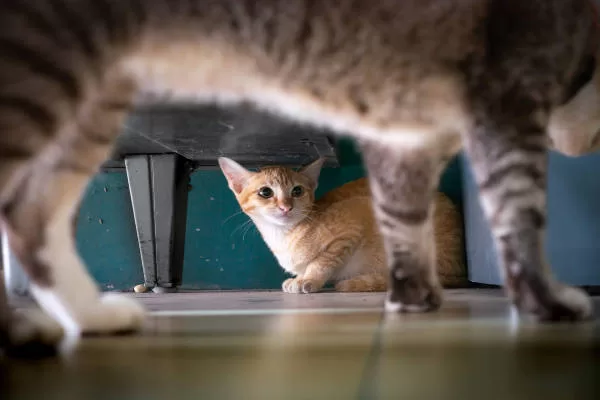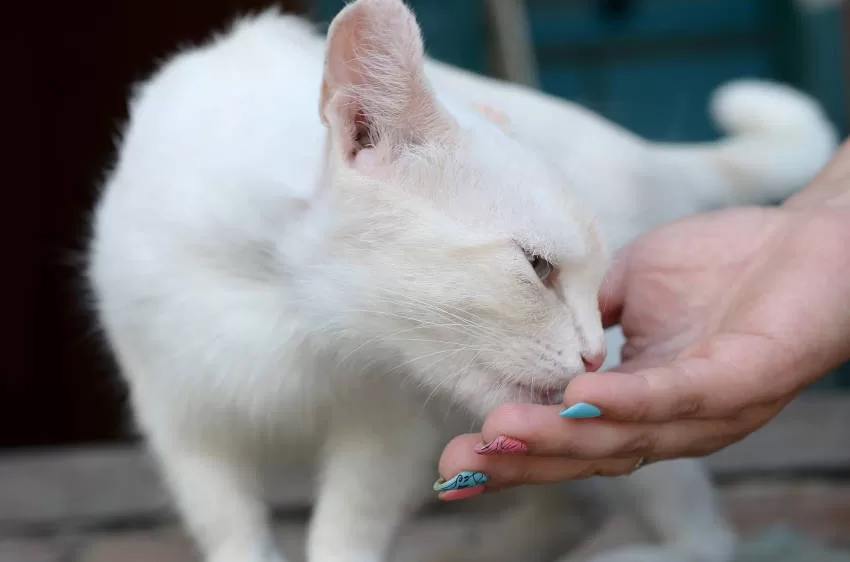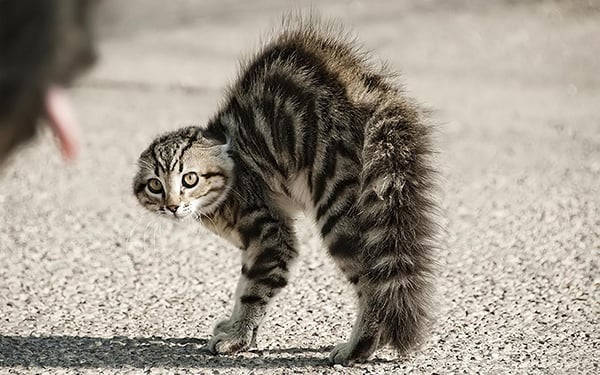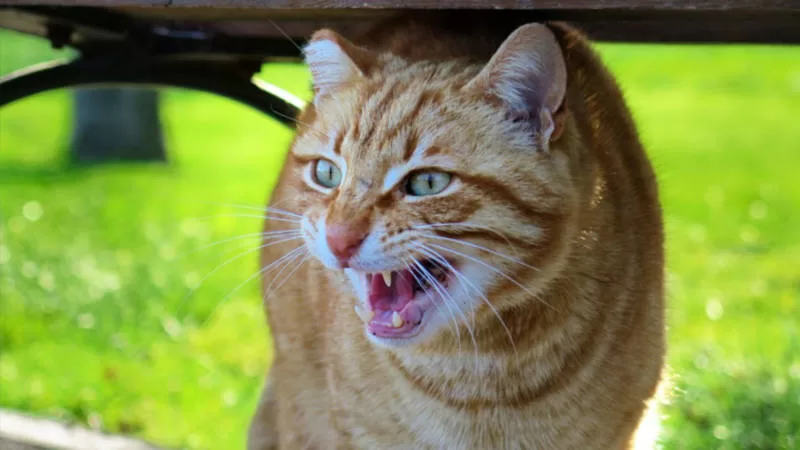Introduction to Cat Communication
Ever wondered how kittens communicate? Well, feline communication is a complex and varied mix of body language, vocalizations and olfactory markings. This article will dive into the research to help you better understand your pet.
Unlike human communication, the way cats interact with each other is a fascinating phenomenon that is beyond our reach. The Humane Society points out that understanding this unique form of communication is essential to properly caring for these adorable animals. So, get ready to embark on this captivating journey into the world of cat communication!
The Importance of Feline Verbal Language
Cats have a unique way of communicating. They use a variety of sounds, gestures and facial expressions to express their feelings and desires. Among these, meowing is an important form of expression for most cats.
Believe it or not, each meow has a different meaning depending on the context in which it is used. For example:
- A short, high-pitched meow can be a greeting.
- A prolonged meow can indicate that the cat is hungry or wants attention.
- A low, raspy meow can be a sign of discomfort or pain.
In addition, the tone and volume of the meow can indicate different emotions or needs of the cat. A loud, persistent meow usually indicates anxiety or fear, while a low, soft meow can be a sign of contentment.
However, it is important to remember that not all cats are created equal. Some cats are more vocal than others; this varies according to the breed and personality of the animal. For example:
- Siamese are known to be very vocal.
- Persians tend to be quieter.
- Stray cats can vary greatly in terms of vocalization.
It is also worth noting that cats often use meows primarily to communicate with humans, not so much with each other.
Understanding how cats communicate can help us better understand their needs and behaviors, strengthening our relationship with these wonderful pets. So pay attention to the sounds your cat makes – he might be trying to tell you something!
Deciphering the Body Language of Cats

The Cat’s Body Posture
A cat’s body is like an open book, ready for humans to read. Body posture can indicate the emotional state of the cat. For example, if a cat’s body is relaxed and its tail is up, this usually indicates that it is happy and at ease. If your cat is curled up or has an arched back, this could be a sign that something is not right.
The Movement of the Tail
Tail flicking is another strong indicator of feline mood. According to animal behaviorists, an erect, fluttering tail usually indicates excitement or happiness. However, if the tail is low or between the legs, it could mean fear or submission.
- Upright Tail: Happiness
- Low tail: Fear
- Tail Between Legs: Submission
Squinting Eyes and Slow Blinking
Cats’ eyes are also windows to their souls. Squinting or slow blinking can be a sign of confidence and contentment. If your cat looks you straight in the eyes and blinks slowly, he is trying to tell you that he trusts you and that he feels safe around you.
make your hair stand on end
Standing hairs can be a sign of fear or aggression in a cat. When the fur is standing up (also known as “parsing”), the cat is trying to appear larger to intimidate potential threats. Therefore, it is best to give your feline friend space when you notice this behavior.
Understanding cats’ body language allows humans to better understand their furry friends and respond appropriately to their emotional needs.
Olfactory Communication: The Rubbing Habit
Cats have a unique way of communicating, which often goes unnoticed by humans. One such form is olfactory communication, specifically the habit of rubbing.

Marking Territory
Cats mark their territory by releasing pheromones when rubbing against objects or people. It’s like they’re leaving an invisible message for other cats, saying “This place is mine!” When a cat rubs his body against you, he’s not just looking for affection. He’s depositing pheromones and marking you as part of his territory.
These pheromones are released by glands located in various parts of the cat’s body, including the cheeks and base of the tail. So when a cat rubs its face or tail against something – be it a piece of furniture, a toy or even your leg – it is essentially putting its “stamp” on that object.
feline greeting
In addition, this behavior also serves as a form of greeting among known cats. When two cats meet and rub their faces against each other, they are exchanging information through the pheromones released by the glands in their cheeks. It’s a kind of feline handshake!
Importance of Olfactory Communication
Ignoring this aspect of feline communication can lead to misunderstandings about cats’ territorial behavior. For example, some people may mistakenly interpret this behavior as aggression when in fact it is just a way for cats to express their ownership over a certain space or object.
Understanding this peculiar form of communication can help a lot in living with our feline friends. After all, the more we understand about the universe of our pets, the better we can meet their needs and ensure their well-being.

Sounds and Gestures in Feline Communication
Purring: More Than Just Contentment
Does your feline purr? Generally, this sound indicates contentment. However, purring can also be a sign of stress or physical discomfort in some situations. It’s important to observe your cat closely to understand the meaning behind this sound.
- If your cat is comfortable and relaxed next to you, the purring is probably a happy sign.
- But if he’s purring while showing other signs of discomfort — like a lack of appetite or difficulty moving — that could indicate pain or illness.
Hissing and Growling: Clear Signs of Fear or Annoyance
Cats use a variety of sounds to communicate, including hissing and growling. These are usually clear signs of fear, irritation or aggression in cats.
- A hiss can be a warning for you to back off.
- A growl is even more serious, usually indicating that the cat feels threatened.
“Chirr” Fast: Excitement in Sight
Have you ever heard your cat make a rapid “chirr”? This sound is often used by cats when they are excited about something, like seeing potential prey through the window.
- If they’re staring at something with their eyes wide open and they make this sound, they’re probably excited.
- This can also happen when they see another animal through the window or when they play with their favorite toys.
Tapping Hind Paws on the Floor: Intense emotion
Last but not least in feline communication is the unusual gesture of stomping your hind legs on the ground. This rare gesture usually indicates great excitement or frustration.
- You will notice this mostly during intense play.
- Or maybe when your cat is frustrated because it can’t achieve something it really wants.
Just as we humans use words and facial expressions to express our emotions and intentions, cats have their own complex language made up of sounds and gestures. Learning to interpret it helps us better understand our furry friends and respond to their needs in the right way.
Positions of Cats Ears and Tail
Communication between cats is a fascinating universe that deserves to be explored. They use a variety of physical cues, such as ear and tail positions, to express their feelings.

The Ears of Cats
First, let’s talk about feline ears. When they are pointed forward, it indicates an interest in what is going on around them. It’s like they’re saying, “I’m paying attention to you.”
On the other hand, if the ears are flat against the head, this could be a sign of fear or aggression. Imagine this situation: your cat sees a big dog for the first time. He will probably flatten his ears to protect them and show that he is scared.
There is also the intermediate position of the ears facing back but not flat against the head. This may suggest uncertainty or mild anxiety in cats.
The Tail of Cats
Now let’s talk about the tail of these charming animals. An erect tail usually shows happiness while a puffy tail shows fear or threat. If you come home from a long day at work and your cat lifts its tail vertically when it sees you, that’s a sure sign that it’s happy you’re here!
However, if the cat’s tail is wrapped tightly around its body, it suggests insecurity; maybe he is in unfamiliar surroundings or around strange people.
And last but not least: a rapidly wagging tail indicates irritation in the feline world! So if you see your cat doing this movement with his tail – you better give him some space!
In short:
- Ears pointing forward : Interest
- Ears flat against the head : Fear or aggression
- Ears turned back (not flat) : Uncertainty or mild anxiety
- Tail erect : Happiness
- Swollen Tail : Fear or Threat
- Tail wrapped tightly around the body : Insecurity
- Tail wagging rapidly : Irritation
Always remembering that each cat is unique and these are just some generic examples of how they can communicate through the positions of the ears and tail.

Learning to Communicate with Your Cat
Respect the limits of the cat
The first thing you need to understand about how cats communicate is the importance of respecting your personal boundaries. Cats are independent animals and value their space very much. If your cat seems uncomfortable with your approach, it’s best to step back and allow him to come to you when he’s ready.
Observing cat behavior
Another key to understanding feline communication is to closely observe the animal’s behaviors. For example, if your cat is constantly scratching in a specific area of the house or asking for food more often, he might be trying to tell you something. Watch out for these signs and try to respond appropriately to their needs.
Use of positive rewards
Treats are an excellent way to reinforce good behavior in your cat. When he does something you want to encourage, like using the litter box correctly or not scratching the furniture, give him a treat as a reward. This will associate that behavior with something positive and increase the chances of repeating it in the future.
Avoiding severe punishment
Last, but certainly not least, avoid harsh punishment when interacting with your cat. Physical punishment or yelling can cause unnecessary fear in the animal and damage your relationship with him. Instead, opt for gentler, more effective methods of correcting behavior.
By following these simple guidelines, you can learn to communicate effectively with your cat and build a healthy, respectful relationship with your cat.

Conclusion: Understanding Feline Communication
Understanding feline communication is a challenging but also rewarding task. Cats’ verbal language, their gestures, and the position of their ears and tail are all key elements in deciphering what your furry friend is trying to say.
Olfactory communication, such as the habit of rubbing, also plays a crucial role in the cat’s world. And we can’t forget the importance of learning to communicate with them on their own terms.
So pay attention to your cat’s behavior and remember: every meow, gesture or tail position has a meaning. You just need to be willing to understand!
And now? Well keep learning! The more you know about how cats communicate, the better your relationship with them will be.
Common questions:
How can I improve my communication with my cat?
You can start by looking more closely at your cat’s ways of behaving – sounds he makes, body positions and even his smelling habits.
What does it mean when a cat rubs against me?
When a cat rubs up against you, it is marking you as part of its territory through pheromones released by glands on its face.
Why do cats meow?
Cats meow to communicate with humans. Each meow can have a different meaning depending on the context and intonation.
Do cats’ gestures have any meaning?
Yes! For example, when a cat slowly closes its eyes in front of you, this is known as an “eye kiss” and is a way of expressing affection and trust.
What does it mean when my cat’s ears are back?
Ears back usually indicate fear or aggression in the feline world. It’s good to give your pet space at this time.
External Links:

